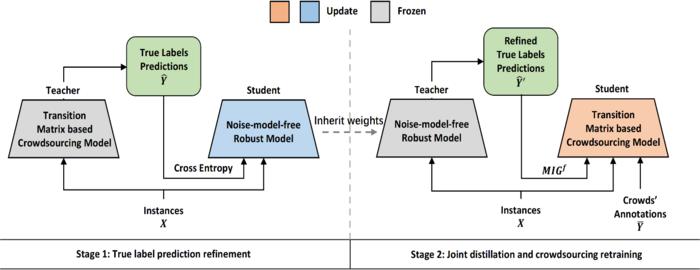Whole Genome Sequencing Enhances Cancer Origin Detection
In a breakthrough poised to revolutionize oncology diagnostics, a team of researchers led by Rebello, Posner, and Dong has demonstrated how whole genome sequencing (WGS) can dramatically enhance the diagnosis and treatment strategies for cancer of unknown primary (CUP). Published in Nature Communications, their landmark study sheds new light on the potential of comprehensive genomic […]


In a breakthrough poised to revolutionize oncology diagnostics, a team of researchers led by Rebello, Posner, and Dong has demonstrated how whole genome sequencing (WGS) can dramatically enhance the diagnosis and treatment strategies for cancer of unknown primary (CUP). Published in Nature Communications, their landmark study sheds new light on the potential of comprehensive genomic analysis to pinpoint the elusive tissue of origin for metastatic tumors whose primary site remains undetected despite conventional diagnostic workups.
CUP is notoriously challenging in clinical practice due to its ambiguous nature; metastatic tumors are identified, yet doctors remain unable to locate the original tumor site. This uncertainty hampers precise treatment planning, leading to empiric chemotherapy regimens that often fall short of improving prognosis. The researchers tackled this ongoing dilemma by employing WGS as a diagnostic tool, leveraging its unparalleled ability to decode the complete genetic blueprint of tumor cells and uncover hidden mutational patterns characteristic of specific tissues.
By analyzing genome-wide mutations, structural variants, and mutational signatures through sophisticated computational frameworks, the team successfully linked metastatic samples to their most probable tissue of origin. The granularity afforded by WGS data, including single nucleotide variants, copy number alterations, and chromosome rearrangements, provides a genomic fingerprint uniquely reflective of the tumor’s biological genesis. This methodological advancement represents a departure from traditional immunohistochemistry and targeted gene panels, which provide limited molecular insights and often fail to resolve cases.
The study encompassed a large cohort of CUP patients whose clinical diagnostics had yielded inconclusive or ambiguous results. Each tumor specimen underwent high-depth WGS, followed by bioinformatic integration with extensive reference databases containing genomic profiles from various known cancer types. Advanced machine learning algorithms parsed through these complex datasets, identifying patterns consistent with specific cancer lineages, even in highly heterogeneous and evolutionarily dynamic metastatic tissues.
Notably, the improved accuracy in diagnosing tissue of origin translated into tangible clinical benefits. Armed with genomic evidence indicative of the primary site, oncologists could tailor treatment regimens more precisely, aligning therapies with those used for anatomically defined cancers. This personalization has direct implications for patient outcomes, as tissue-specific treatment protocols often outperform empirical chemotherapy applied to CUP cases treated blindly.
The researchers emphasize that WGS provides a panoramic view of tumor biology that surpasses the capabilities of conventional diagnostic modalities. For instance, mutational signature analyses reveal underlying carcinogenic processes, such as tobacco exposure or UV damage, which serve as indirect indicators of tumor provenance. Structural variations and chromosomal abnormalities further refine classification, enabling the distinction between morphologically similar but molecularly distinct cancers.
Importantly, the study also found that some tumors classified as CUP harbored actionable mutations, opening new avenues for targeted therapies. The integration of WGS in diagnostic pipelines allows clinicians to not only identify the cancer’s origin but also detect genomic alterations susceptible to existing molecularly targeted agents or immunotherapies. This dual utility enhances the potential to administer precision oncology, moving beyond simply guessing the tumor type toward actively exploiting its vulnerabilities.
From a technical perspective, the implementation of WGS posed challenges such as data complexity, interpretation hurdles, and the need for rapid turnaround times compatible with clinical workflows. The research team addressed these obstacles by optimizing sequencing protocols, employing streamlined bioinformatic tools, and validating their findings across multiple independent cohorts to ensure reproducibility and robustness.
Moreover, the study paves the way for integrating WGS into standard-of-care practices, highlighting how genomics-driven diagnostics could become fundamental in managing CUP and perhaps other diagnostically challenging cancers. The cost-effectiveness of WGS continues to improve as sequencing technologies advance and computational infrastructures become more accessible, reinforcing its feasibility for widespread clinical use.
The implications extend beyond diagnostic clarity; uncovering the primary tumor source allows for better prognostic assessments. Prognostic biomarkers derived from WGS data can stratify patients based on expected disease trajectories, enabling more informed decisions about treatment intensity and follow-up strategies. Accurately identifying the tissue of origin also facilitates enrollment in clinical trials targeting specific cancer types, broadening therapeutic options for CUP patients.
Intriguingly, the study’s findings resonate with emerging paradigms in oncology that recognize cancer as a genomic disease defined by its mutation landscape rather than solely by histopathology. The ability of WGS to capture the full spectrum of genomic alterations empowers oncologists to transcend traditional classification systems steeped in morphology and immunophenotyping, moving toward molecular taxonomy that better reflects tumor biology.
This research underscores the transformative potential of genomics-driven precision medicine in oncology, especially for complex cases like CUP where uncertainty has long hindered progress. By unlocking the molecular secrets encoded in tumor genomes, WGS embodies a new frontier in cancer diagnosis and treatment, promising to shift clinical paradigms and improve survival outcomes through tailored therapeutic approaches.
As genomic databases continue to expand and machine learning algorithms become more sophisticated, the accuracy and utility of WGS in cancer diagnostics will only grow. The study by Rebello and colleagues stands as a compelling proof-of-concept that integrating whole genome sequencing into clinical practice is not only feasible but highly beneficial, setting a roadmap for future innovations in cancer care.
Ultimately, the integration of comprehensive genomic technologies heralds a more hopeful era for CUP patients, who have historically faced grim prognoses due to diagnostic ambiguity. WGS offers a beacon that illuminates the hidden origins of metastatic cancers, enabling clinicians to deploy more effective, targeted interventions based on precise molecular diagnoses rather than trial-and-error approaches.
Through this innovative research, the vision of personalized oncology comes closer to reality, where every cancer patient’s treatment plan is informed by the unique genetic architecture of their tumor. As the field continues to evolve, whole genome sequencing is poised to become an indispensable tool in the oncologist’s arsenal, catalyzing a new epoch of precision diagnostics and individualized therapeutics that improve lives and redefine cancer care.
Subject of Research: Whole genome sequencing application in tissue-of-origin diagnosis and treatment optimization for cancer of unknown primary (CUP).
Article Title: Whole genome sequencing improves tissue-of-origin diagnosis and treatment options for cancer of unknown primary.
Article References:
Rebello, R.J., Posner, A., Dong, R. et al. Whole genome sequencing improves tissue-of-origin diagnosis and treatment options for cancer of unknown primary. Nat Commun 16, 4422 (2025). https://doi.org/10.1038/s41467-025-59661-x
Image Credits: AI Generated
Tags: advanced genomic fingerprintingcancer of unknown primary detectionchallenges in cancer diagnosticscomputational frameworks in genomicsempirical chemotherapy limitationsenhancing prognosis through genetic insightsgenomic analysis for metastatic tumorsmutation patterns in cancerprecision oncology strategiesstructural variants in oncologytumor origin identification techniqueswhole genome sequencing in cancer diagnosis
What's Your Reaction?

































